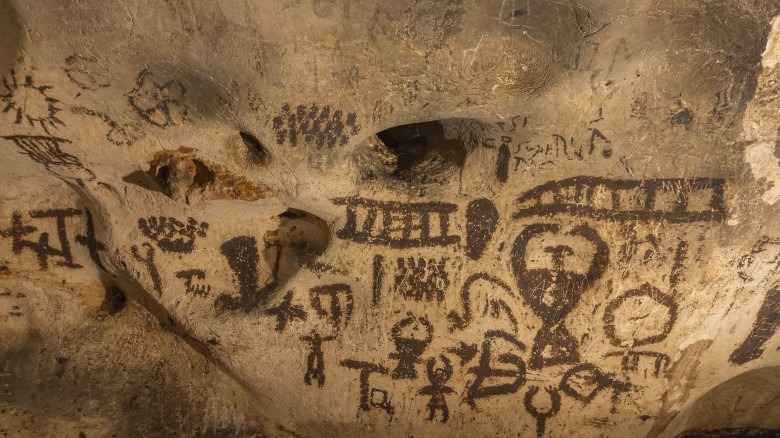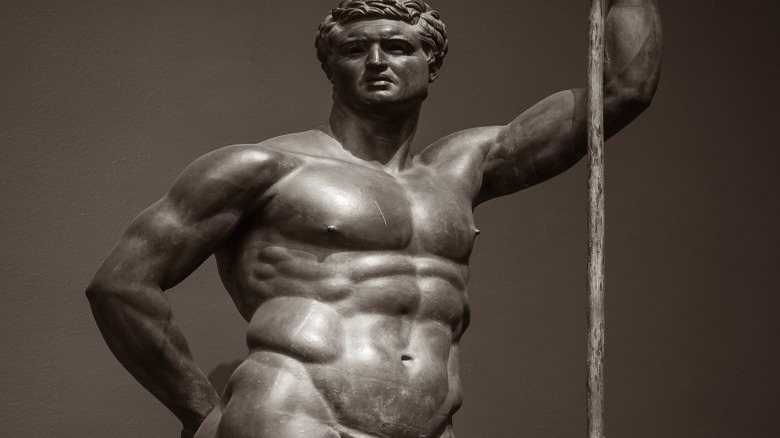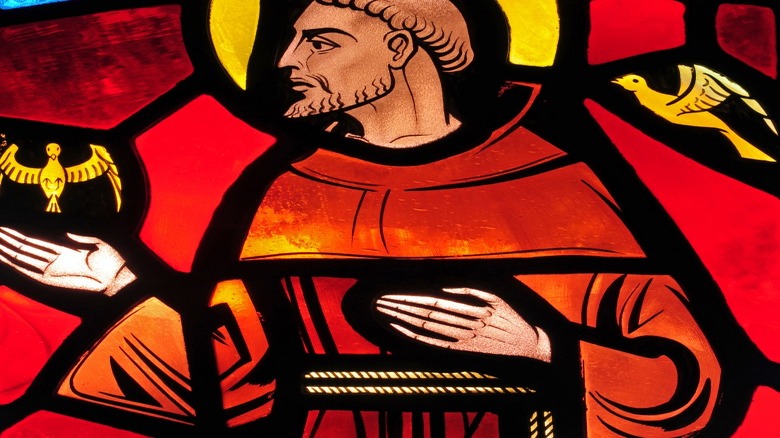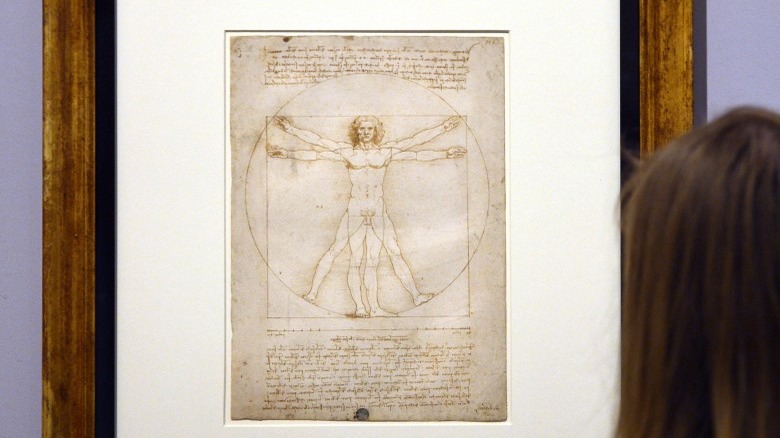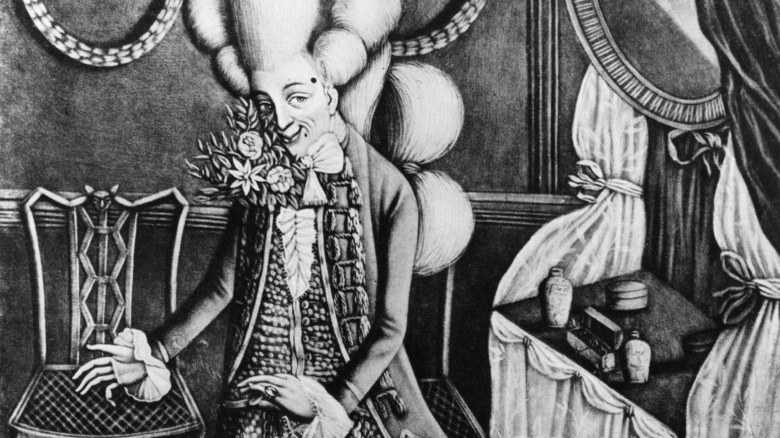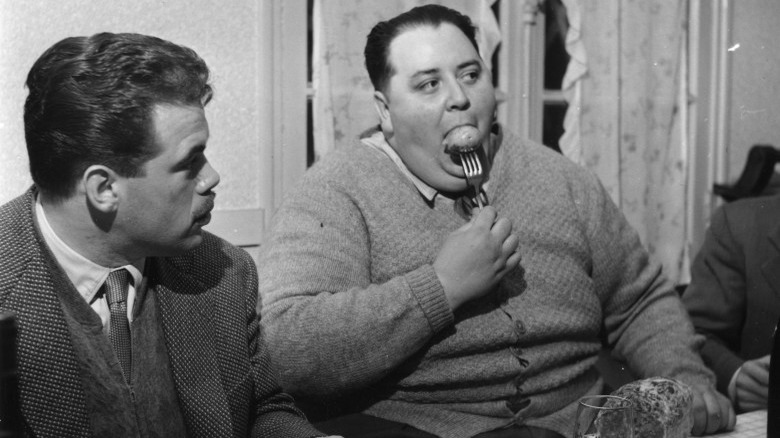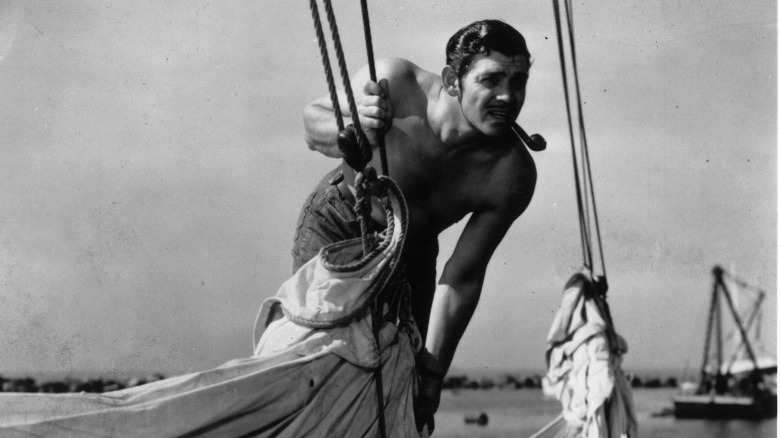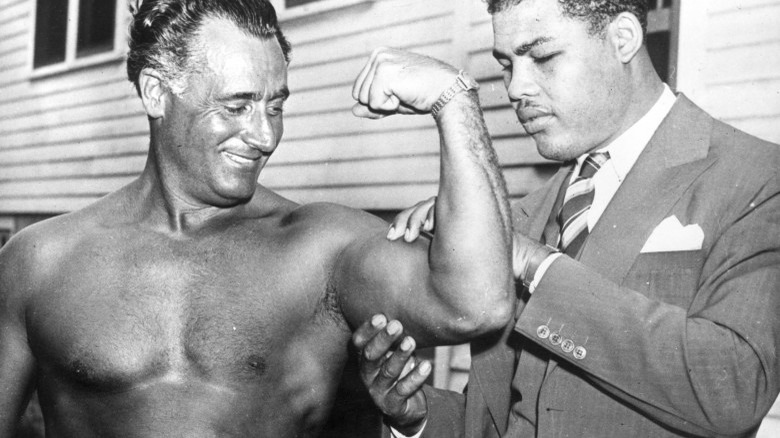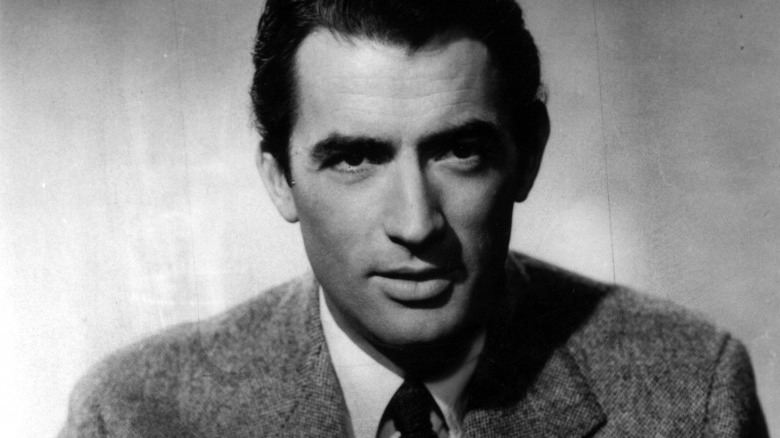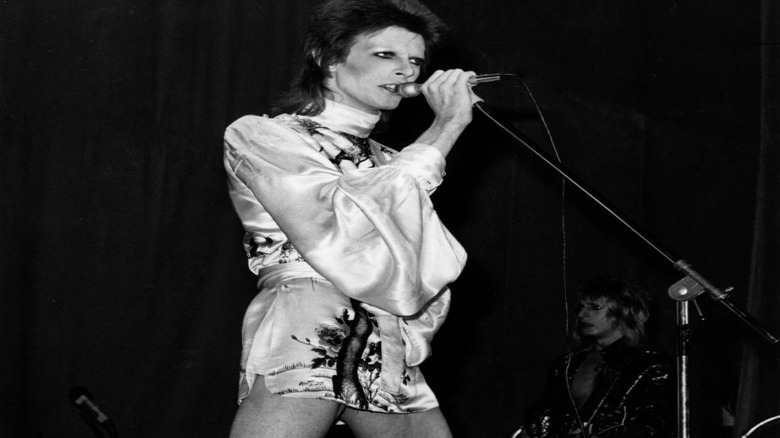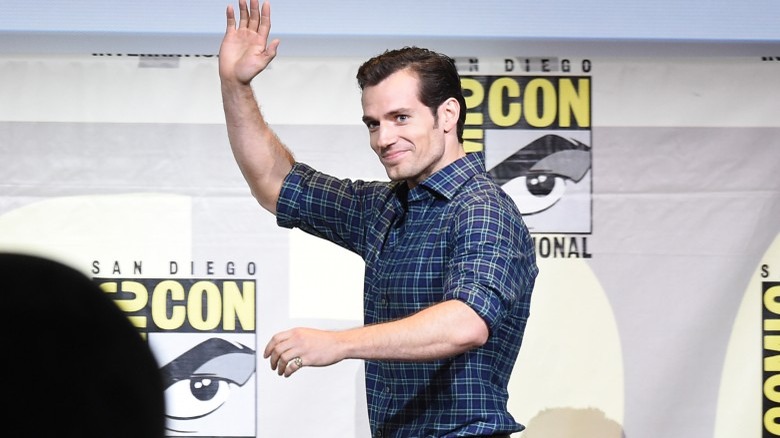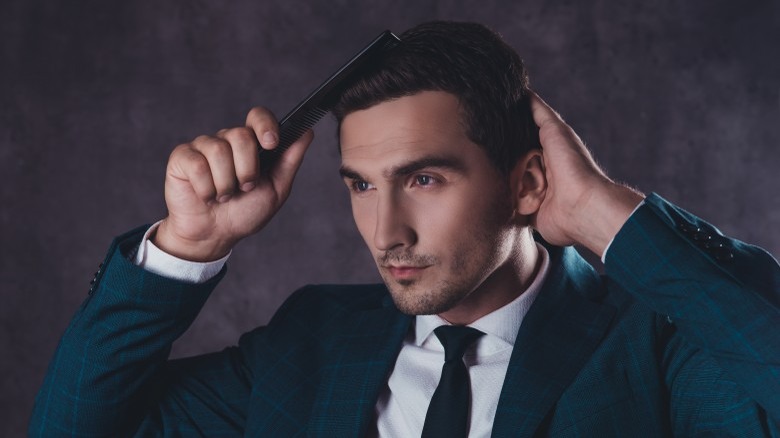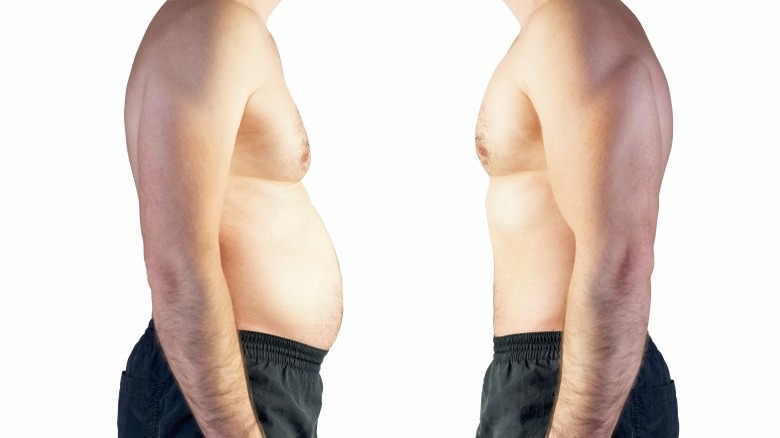How Men's Perfect Body Types Have Changed Throughout History
We may receive a commission on purchases made from links.
When people talk about how bodies are portrayed in the media, it's usually about women. But men have had to deal with body image issues as well. In fact, the "perfect" male body has changed drastically over time, even more so than women.
Now, the media still focuses on women's looks much more than men, but that doesn't mean there's no pressure for a man to obtain the ideal body. When you see how much the idea of an attractive male body has changed, you'll find that, just like for women, "perfect" is completely arbitrary.
Neolithic Era (12,000-8000 BC)
We're taking it way back, all the way to the Neolithic Era and how men's perfect body types began. From around 12,000 BC to 8000 BC, humans were beginning to switch from a hunter/gatherer society to a life based around agriculture. Growing food right where you lived, instead of stalking a buffalo all day, certainly made life a little easier.
Peter Janiszewski, PhD, a scientist who's thoroughly studied the truth behind obesity and co-creator of Obesity Panacea, a blog dedicated to their pursuits in ending obesity once and for all, stated that the ideal man at the time was heavy. Agriculture allowed those with power over the land to have huge feasts and thereby gain weight. So, a heavier man was seen to be more well off and appealing than his skinny counterparts.
Ancient Greece (800 BC-146 BC)
The ancient Greeks were very particular about their ideals of beauty and captured them in works of art we still enjoy today. They weren't interested in any big guys feasting away; according to The Guardian, the ideal man was muscular and lean. In fact, they look a lot like hot guys in magazines we'd see today. If any of those statues came to life and auditioned for the next Marvel film, they'd at least get a callback.
Though there were specific ratios for Greek beauty, they weren't completely realistic. "They have muscle groups that mortal men can't ever achieve: you could go to the gym every day for a year and you wouldn't acquire an Apollo's belt like these statues boast," said The Guardian.
An Apollo's belt (sometimes called Adonis belt) is that abdominal V muscle many guys try to achieve. You'll find a wide array of modern workouts that try to get 21st century men in the same shape as the ideal of ancient Greece.
Middle Ages (800-1000 AD)
It's a common thought that people living prior to the 20th century were shorter and weaker than we are today. But Professor Richard Steckel paints a very different picture. The Ohio State Research News reported on a study done by Steckel about the height and health of humans around 800 AD. In the early Middle Ages, men were nearly as tall as men of the 21st century. Studying thousands of skeletons from the past 1,200 years, he found that the Middle Ages gave men a real growth spurt, which then declined by two and a half inches by the 1700s. Said Steckel's study, "This decline of two-and-a-half inches substantially exceeds any height fluctuations seen during the various industrial revolutions of the 19th century." The reason height is so important to learning about people of the time is that it's a good way to measure their health. Tall people meant healthy people.
So, why did men shrink? Steckel posits a number of possibilities. The early Middle Ages took place in a warmer climate period, so crops were most likely more plentiful. More food equals a healthier guy. Also, people still lived in relatively remote populations. There were no bustling city centers of the Middle Ages, but that also meant they were less likely to rapidly spread disease. As cities came to be and climate slightly cooled, illness and potential lack of food led to the decline in health and size.
So, guys were unexpectedly tall at the time, but what was the "perfect" men's body of the day? Well, the art of the Middle Ages doesn't give us much help in determining the ideal male figure, since the art was primarily dedicated to religious scenes. Men and women were seen covered and certainly the days of Adonis were long gone. Art depicts men as healthy looking and average, nothing more.
Renaissance (1450-1600)
Leonardo Da Vinci made finding out what the perfect men's body would look like in the time of the Renaissance pretty easy. With his drawing of the Vitruvian Man, he lays out exactly how the perfect body should look. It's not just to do with thin vs. fat or lean vs. muscular, but finding a body with perfect proportions. Plus, the circle and square that surround the man aren't there just for extra decoration. They held deep meaning.
According to Toby Lester, author of Da Vinci's Ghost in an interview with NPR, "The circle, since ancient times, connoted, you know, things divine and cosmic. It's the perfect shape, that all of its points on its circumference are equidistant from the center, and it was the shape that governed all of the supposed concentric fears that made up the cosmos. And then you've got the human element of things, the square, where you bring things down to Earth and make sense of them, set them right." The Vitruvian man wasn't just a hot bod to aspire to, but the absolute connection of heaven and Earth.
The Macaronis (1700s)
A precursor to the fop, the Macaronis were originally British young men who went abroad, fell in love with the Italian food "maccaroni" and the European style of dress. According to historian Geri Walton, the men would commonly order maccaroni to show off that they recently visited Italy and eventually got the nickname "macaronis." From the 1775 book Easy Phraseology, Joseph Baretti wrote "Strange, that this word has so much changed of its meaning in coming from Italy to England: that in Italy it should mean a block-head, a fool; and mean in England a man fond of pompous and affected dress!" They began to wear more fashionable and slightly feminine clothing. A trim figure was preferred as their many layers clung to the body. Basically, they were the hipsters of their day.
Eventually, Macaronis became a laughing stock. Their look became so extreme with huge wigs, heavily made up faces, and ornate and ridiculous accessories that by 1775 people began to describe the look as "effeminate." The Oxford Magazine of the time said, "There is a indeed a kind of animal, neither male nor female, a thing of the neuter gender, lately started up among us. It is called a Macaroni...I may perhaps, on some future occasion, be ample in animadversion on those lady-like gentlemen, who, despairing to be thought men, are ambitious of resembling women."
People resented this womanly look and it soon fell out of fashion and placed a greater importance on looking properly masculine. Extra fun fact: In "Yankee Doodle Dandy" the song is about the British mocking the Americans' tattered and worn way of dressing. Hence "Stuck a feather in his hat and called it Macaroni," both throws shade on Washington for thinking a feather would be enough to be a snappy dresser and refers back the Macaronis, rather than the pasta we all loved as kids (and still love now).
The Gilded Age (late 1800s-early 1900s)
If you're a big fan of the "dad bod," then the Gilded Age would have been your very favorite era for perfect men's bodies. In a throwback from the Neolithic Age, weight meant status. So, fat men were in. It signified that you had plenty of money and didn't need to do hard labor. According to the book Looking Good a big belly was considered attractive. It was so cool to be big, they had Fat Men's Clubs.
To gain entry to a Fat Men's Club, you had to be over 200 pounds to join and there were many clubs across the country. The Boston Globe wrote (via NPR) about one meeting in 1904, "This village is full of bulbous and overhanging abdomens and double chins tonight, for the New England Fat Men's Club is in session at Hale's Tavern. The natives, who are mostly bony and angular, have stared with envy at the portly forms and rubicund faces which have arrived on every train."
They'd even have competitive weigh ins to celebrate who was the biggest. NPR quoted a New York Times article from 1885, "'I must weigh over 300 pounds now,' George Kapp boasted. Alas, he came in at a disappointing 243...His friends thought he shrank at least 20 pounds more from grief before evening." Of course, fat women weren't fashionable, it was only men. But, this was the last time that a big belly would be the height of attractiveness.
Hollywood (1920s)
As Hollywood films became immensely popular, they nearly single handedly shaped the ideal form of beauty for men and women. It's an old tale that women have always been pressured to stay thin for Hollywood, but the same thing happened to men.
According to Looking Good, people looked about 20 pounds heavier on film, so directors preferred actors with a leaner frame. Now that the industry had moved from the often freezing east coast to the always sunny California, people could show off more of their bodies year round. Plus, movies back then had men riding horses, sword fighting, and doing a number of physically intense stunts, so men had to be in shape to do their job.
Only 15 years from the age of Fat Men's Clubs, a slim dashing figure was all the rage, while the fat man was old news.
Charles Atlas (1930s-40s)
Men began to slim down for Hollywood, but Charles Atlas built them back up. Atlas was the first fitness guru and he worked incredibly hard for his physique.
Smithsonian Magazine details that Atlas was once a 97 pound guy who got tired of getting bullied all the time. So, he began to work out, came up with the term "Dynamic Tension" (a form of mostly isometric exercises) and eventually became an incredibly strong icon. During the hard times of the 1930s and '40s, people were inspired by Atlas' story.
Harvey Green, author of Fit for America: Health, Fitness, Sport and American Society, 1830-1940 told Smithsonian that Atlas' solution to the Depression and World War II was "to be bigger than everybody else. Then nobody would mess with you. The idea that physical size could give you confidence was a powerful message." This started the first real fitness movement and began the trend towards men wanting to build up their physiques.
The Executive look (1950s-early 1960s)
Now that the war and depression were over, men were slightly less concerned with looking strong, but they did want to look big. In came the era of the Executive look, where men aimed to pose large, imposing figures as part of the perfect body. Suit jackets and overcoats had large boxy shoulders and a much looser fit than we'd see today. There was some emphasis on a trim waist, but the biggest asset was broad shoulders on a tall build.
In The Pyramid Climbers by Vance Packard, a book from 1962 all about success in the corporate world, he describes what an ideal executive should look like. "The fashion now is for big men. In the old days in some of the companies the tallest executive was five feet five, but now the fashion is for big men even though there are plenty of small men doing a terrific job." He told of instances where he was asked to submit only candidates who were over six feet tall and surmised that the big man is preferred because "he has a certain presence."
Basically, if you were short in the '50s you needed to work harder to get ahead. Packard reported, "If small, he should make up for it in energy and good health."
1960s
The '60s shook off some of the formal air from the previous decade and suave, stylish men became fashionable. GQ lists some of the most fashionable men of the era and you can see the look was clean and the suits fit closer to the body. The type of man that stayed in the corporate world maintained this buttoned up style, while rock stars and younger men often went the more bohemian route. For fashion, men started to have options that consisted of more than just "should I wear a black or dark grey suit jacket?"
The era's perfect male body is exemplified by Sean Connery, the very first 007. He was trim, but didn't have a lot of muscle definition and did have a lot of chest hair. Michael Caine was considered handsome leading man, especially after his role in role in Alfie, but his shirtless look was fairly unimpressive by today's standards. Men should still have broad shoulders and a flat stomach, but cut biceps and a six-pack was definitely not required.
Late 1960s-early 1970s
For the first time since the age of the Macaronis, a less ruggedly masculine look came into style as the perfect men's body. Androgyny was huge for David Bowie and even Mick Jagger, who according to The Guardian enjoyed playing with looks that were both masculine and feminine. A thin, lanky frame became popular for followers of this look. Though unisex clothes became popular, they didn't really affect gender roles or decrease the importance of having a perfect body.
Professor Jo Paoletti said in her book Sex and Unisex, "Part of the appeal of adult unisex fashion was the sexy contrast between the wearer and the clothes, which actually called attention to the male or female body."
Not all men were into the gender bending idea. They sported mustaches and wholeheartedly embraced the new trend of bell bottoms. Men's clothes were tighter fitting than years past, so a reasonably toned physique was in fashion. Still no need for six-packs, but you couldn't hide a beer gut with those high waisted pants and snazzy jumpsuits.
1980s
Men's perfect bodies went in two completely different directions in the '80s. One path had the hard bodied men exemplified by action heroes like Sylvester Stallone and Arnold Schwarzenegger. In her book Hard Bodies, Susan Jeffords wrote that the action films of the time mixed with Reagan's "return to values" perfectly defined the masculine ideal of the '80s.
For this decade, having broad shoulders but a bit of a pudge wouldn't cut it anymore. The Reagan era brought in a new wave of heightened masculinity where hitting the gym hard made you more of a man.
On the complete other side of the spectrum was the rise of glam metal. In her book Look What the Cat Dragged In, Anna Kurennaya said, "The genre of glam metal, marked visually by high-volume hair and lurid dress, and lyrically by a ravenous lust for the opposite sex, constitutes a site of complex transgression that upends our collectively constructed notions of gender, sexuality, and authenticity." Though songs like "Talk Dirty to Me" and "Unskinny Bop" might not seem to really challenge gender roles, the fact that these hyper-masculine bands who dressed in a very feminine way was a completely new idea that the '80s embraced.
More and more muscular (1990-today)
With its beginning in the '80s, the idea of a cut, very muscular man being the ideal has only increased over time. You can see this in the timeline of superhero movies. Compare Christopher Reeve in the 1987 film Superman IV to Henry Cavill. They both played Superman (Reeve from 1978-1987 and Cavill in 2013-2016) and though they're both in excellent shape, Cavill makes Reeve look like a little boy. Now, anybody who plays a "hot guy" in film has to be cut. Just being thin or athletic isn't good enough and from the '90s to today, it's only become more extreme.
The Telegraph posits that these action figures may be giving boys body image issues. The newspaper quoted a study from Alpha Magazine that found that men were more anxious about their bodies in 2015 than they were five years before. The Boston Globe reported that male body-shaming is on the rise with sites like TMZ dedicating whole sections to "Livin Large," where they show unflattering pictures of famous people (mostly me) who've gained weight.
Though this is something women have been dealing with for decades, men are now getting near equal media pressure to have unattainable bodies. And they might be able to blame Superman.
One thing that's never gone out of style — hair
The one thing that has remained constant for the perfect man? A full head of hair. Men have fretted over losing their hair since the beginning of time.
In Looking Good, the author quotes Arabian Nights where a woman says, " Is there anything more ugly in the world than a man bald and beardless as an artichoke?" According to the book, Julius Caesar sported his signature crown mostly to hide his disappearing hairline. In ancient Rome, according to the Getty blog, baldness was associated with wisdom and many philosophers were shown as bald, but everybody else did whatever they could to hide diminishing hair. Men would dye their grays and were very emotionally attached to their hair. Emperor Domitian said of hair, "Be assured that nothing is more pleasing, but nothing shorter-lived." That guy was an emperor and was still super sad about going bald.
Later, Looking Good stated that men wore wigs to hide their real lack of hair and as years passed, people invented tons of questionable potions to bring your hair back. In the 21st century, a fully bald man can be considered attractive (the Rock and Vin Diesel are great examples), but the hair loss treatment industry still makes $1 billion each year. Though styles and body types will continue to change, men wanting long, luscious locks will never change.
The ever changing idea of perfect
What's considered the perfect men's body has so drastically changed over the years, it proves that trying to live up to any kind of arbitrary ideal is always silly. Just imagine those poor men in the Fat Men's Clubs who were considered prime hotties, then getting past aside for the thin Hollywood types? This obsession with muscles will surely pass and hopefully one day "perfect" will be whatever body you naturally have.

